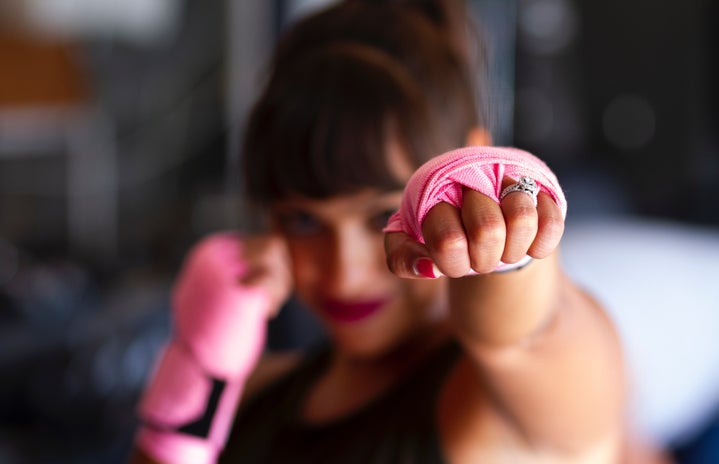Taking a self-defense class has made me feel safer without ever feeling unsafe
I walked into Memorial Union expecting to be met with a solid workout and instead I left with lessons I’ll carry with me each day. The hour-long class was filled with valuable self-defense techniques and knowledge that should be shared. It is important for women, especially those who walk alone, to learn.
1. Self-defense, not offense
One of the first tips that was given was to understand that it is called self-defense, not offense. Meaning, the goal is to get away, not fight back once you have escaped. The chances of “winning” against an attacker can vary, but the safest option is not to test your chances and instead just get away. Perform the techniques you’ve learned to defend yourself then remove yourself from the situation as quickly as possible.
2. Practice with friends
There are many techniques we learned and practiced in the class, but the only way to become good at these skills is to practice them. The instructor mentioned having friends occasionally come behind and bear hug you as a way to practice. One of the skills we learned was to round your shoulders in, move your hips to your non-dominant side, and swing your fist back into the attacker. Make sure not to actually hit your friends while you practice, though!
3. Walk with stuff in your hands
The instructor asked the room how many people had keys and almost everyone’s hands went up. He followed the question with another, asking how many people actually walk around with them in their hands. Very few hands remained in the air. The instructor explained how anything can be turned into something to protect you. Small things you carry in your backpack such as keys or a pen can be used as a simple defense object. We practiced with the instructor grabbing our hair, specifically ponytails. When your hair is grabbed, you should pivot around. If you have something in your hand, hit the attacker in the face with it, but if your hands are empty just use your fist.
4. Yell “fire” not “help”
The sad truth is that many people are selfish and rely on the bystander effect. The bystander effect is an idea that when many people are around seeing someone struggle, the assumption is that they do not have to help because another bystander will. When everyone has this mindset, nobody comes to help. This goes along with the idea that people can be selfish. If people hear you yelling “help,” the likelihood that they will come assist you is lower than if you yell “fire.” This is due to the fact that if people hear the word “fire,” they believe their lives could be affected. Their minds immediately go to “is my stuff on fire?” and “how will this fire negatively impact me?” This will lead to more people paying attention to you and hopefully jumping in to help.
5. Stay alive
The number one goal the instructor told the group was to stay alive. This may seem obvious, but the instructor wanted us to go deeper. He asked us to think about our friends and loved ones to ensure we find the fight to make it back to them. Digging deep within yourself and thinking about those who would miss you if you were not around will help you find the strong fight within yourself.
The tips listed above are just a few of the valuable pieces of knowledge I learned in my self-defense class. I highly recommend all women take time to take a class or just learn some effective techniques on their own to feel more prepared, even if they’ll never need these skills.


